Iron Age skis buried under ice reunited after 1,300 years apart
The newly discovered ski was found seven years after its mate.
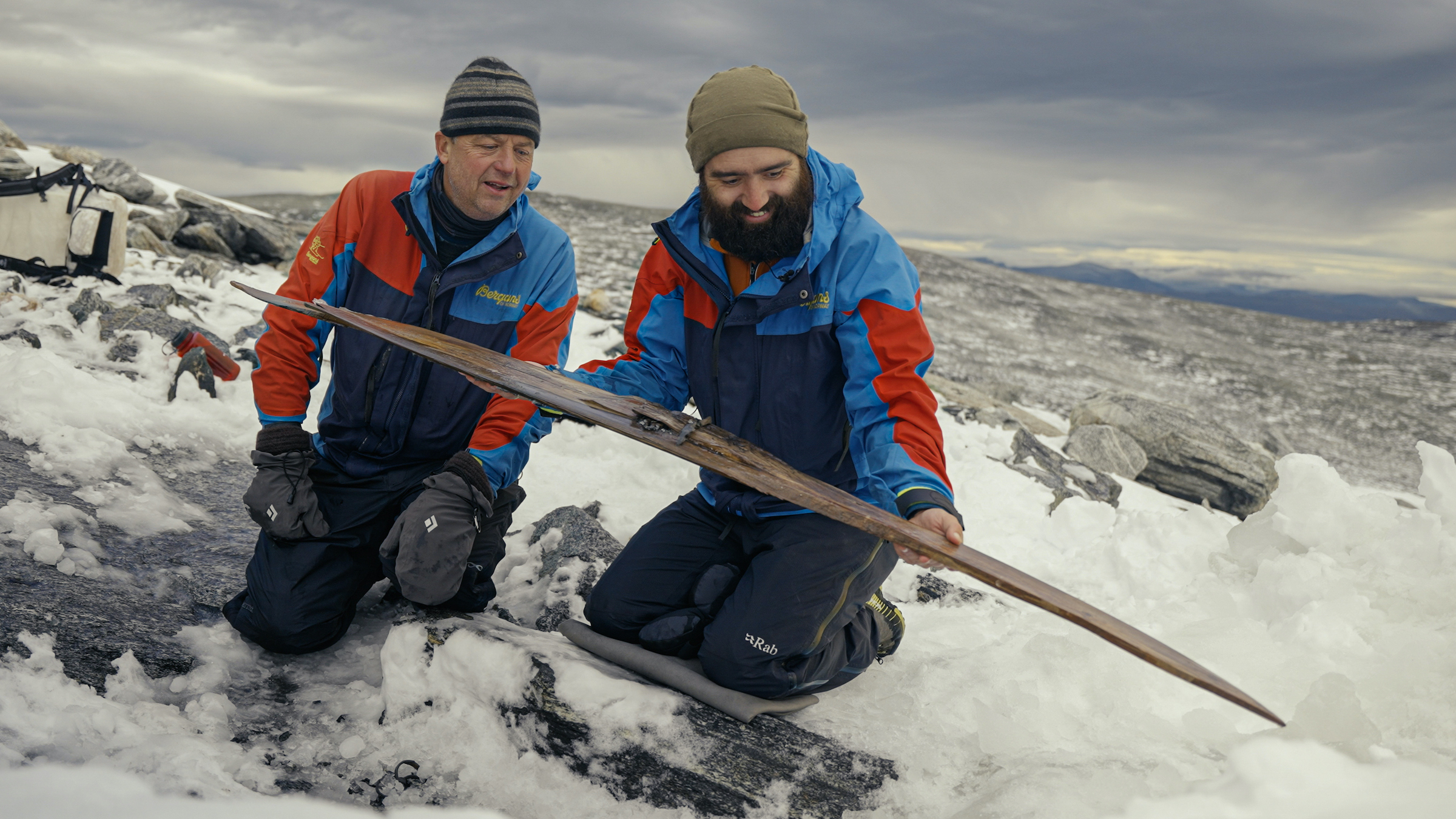
Two Iron Age skis are set for a happy reunion after 1,300 years apart, following the discovery of a second ski on an icy mountain in Norway by glacier archaeologists.
In 2014, the glacier archaeology group Secrets of the Ice uncovered a lone ski at the Digervarden ice patch in Reinheimen National Park in southern Norway. Despite the ski’s age, its icy burial kept it well preserved, and even its original binding — where the skier placed their foot — remained intact. At the time, it was only one of two skis dating to more than 1,000 years ago with preserved binding, Secrets of the Ice reported in an Oct. 5 post.
The team monitored the ice patch for the next seven years, hoping that the melting ice would reveal the ski's missing partner. Their patience paid off; in September, they spotted the second ski just 16 feet (5 meters) from the spot where the first one was found.
"The new ski is even better preserved than the first one!" Lars Pilø, a glacial archaeologist and the editor of the Secrets of the Ice website, wrote in the post. "It is an unbelievable find."
Related: Photos: Ancient arrows from reindeer hunters found in Norway
Getting the second Iron Age ski to the lab for analysis was not an easy task. After satellite data suggested substantial ice melt at the ski-discovery spot on the mountain, the team hiked up and found the second ski on Sept. 20. But they didn't have the right tools to safely free it from the ice, so they left it there. Then, an autumn storm complicated the recovery effort by dumping a lot of snow, burying the ski again.
When the researchers returned on Sept. 26, they were ready — carrying ice axes, gas cookers and packing materials they could wrap the ski in for the hike back. After a three-hour hike, they finally found the ski under 12 inches (30 centimeters) of snow, thanks to their GPS tracker. Brushing off the snow was easy enough, but the ice had an "iron grip" on the ski, so the team used ice picks and lukewarm water heated on gas cookers to free the ski, Pilø wrote in the post.
Sign up for the Live Science daily newsletter now
Get the world’s most fascinating discoveries delivered straight to your inbox.
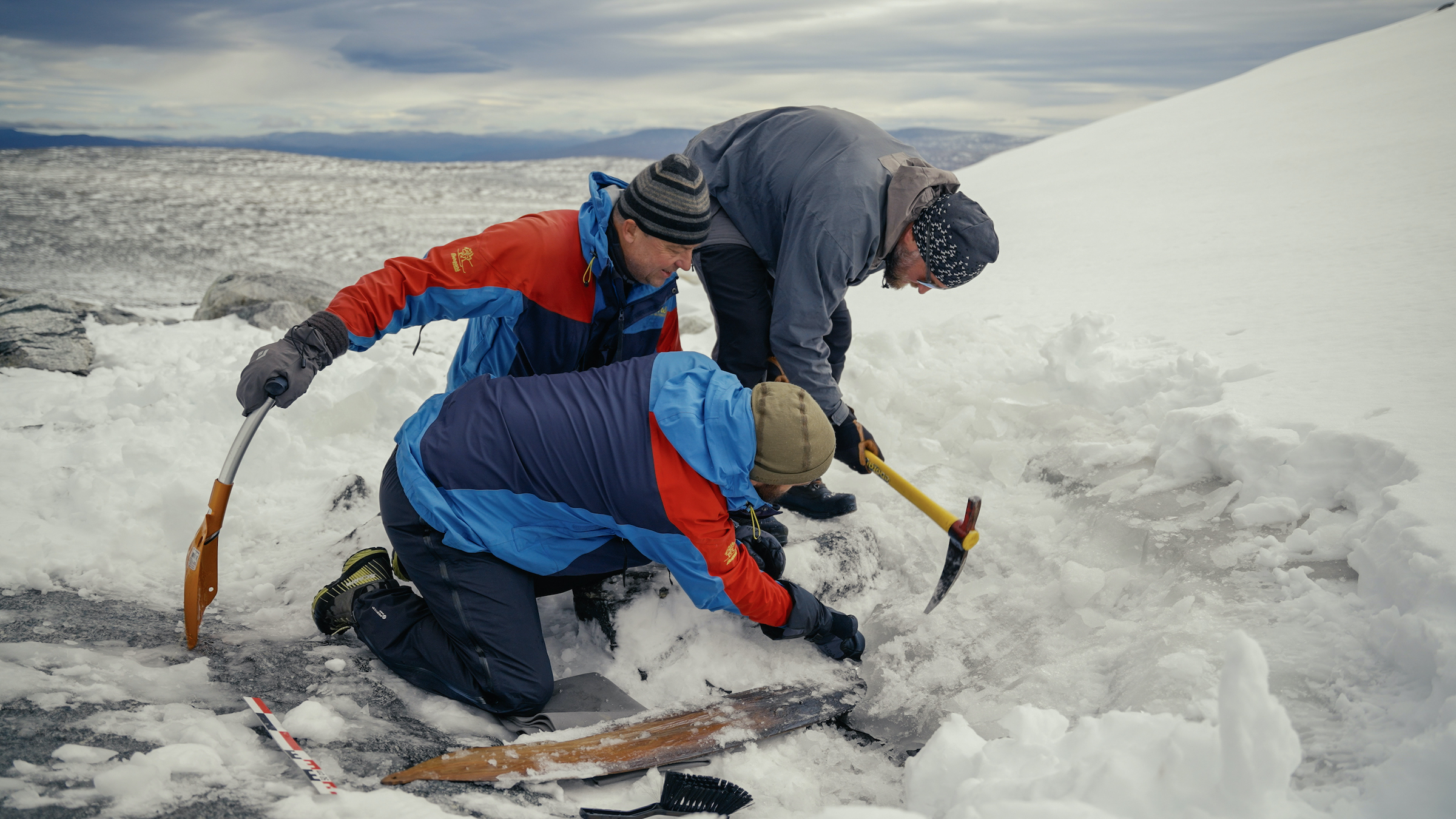
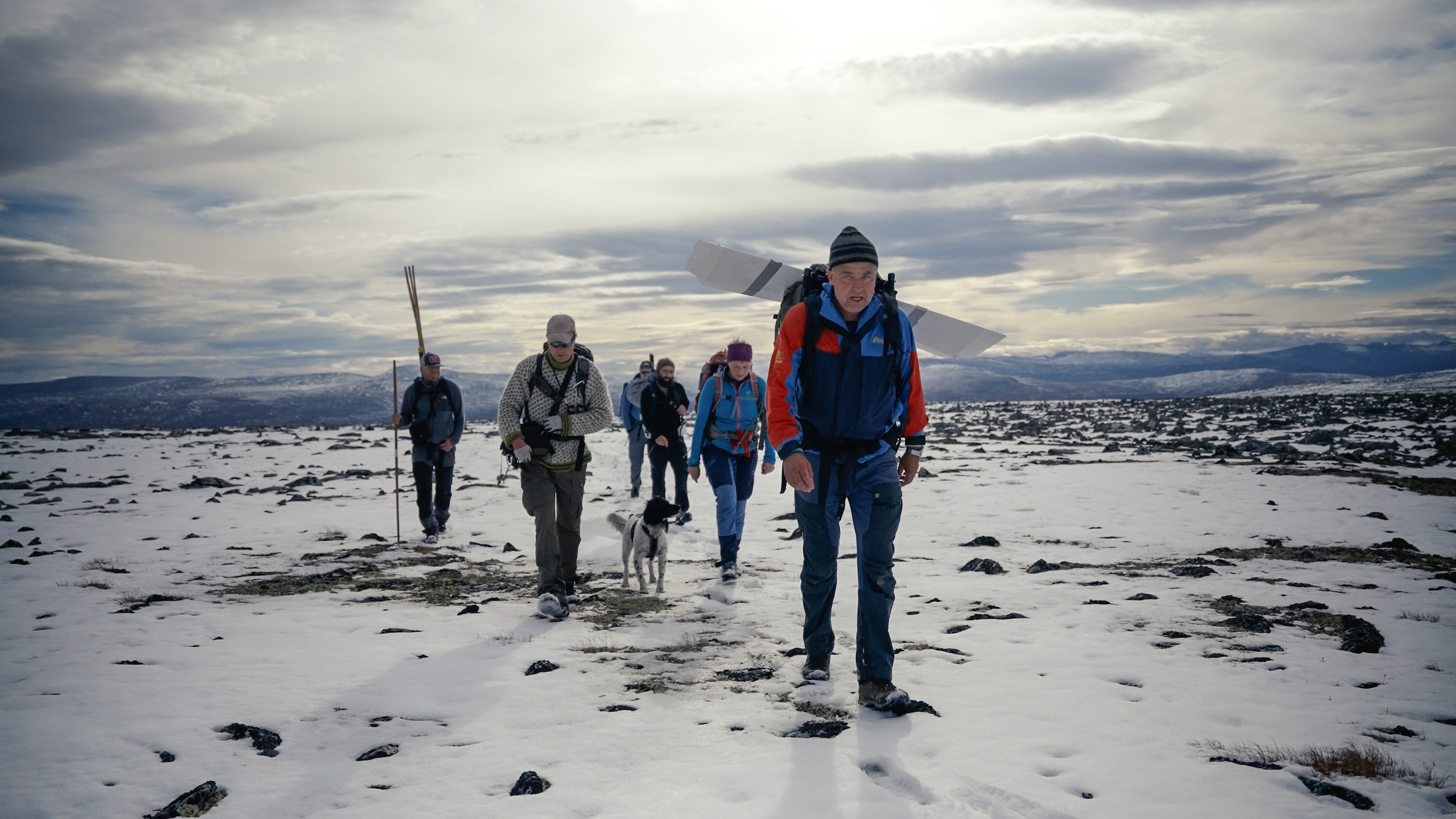
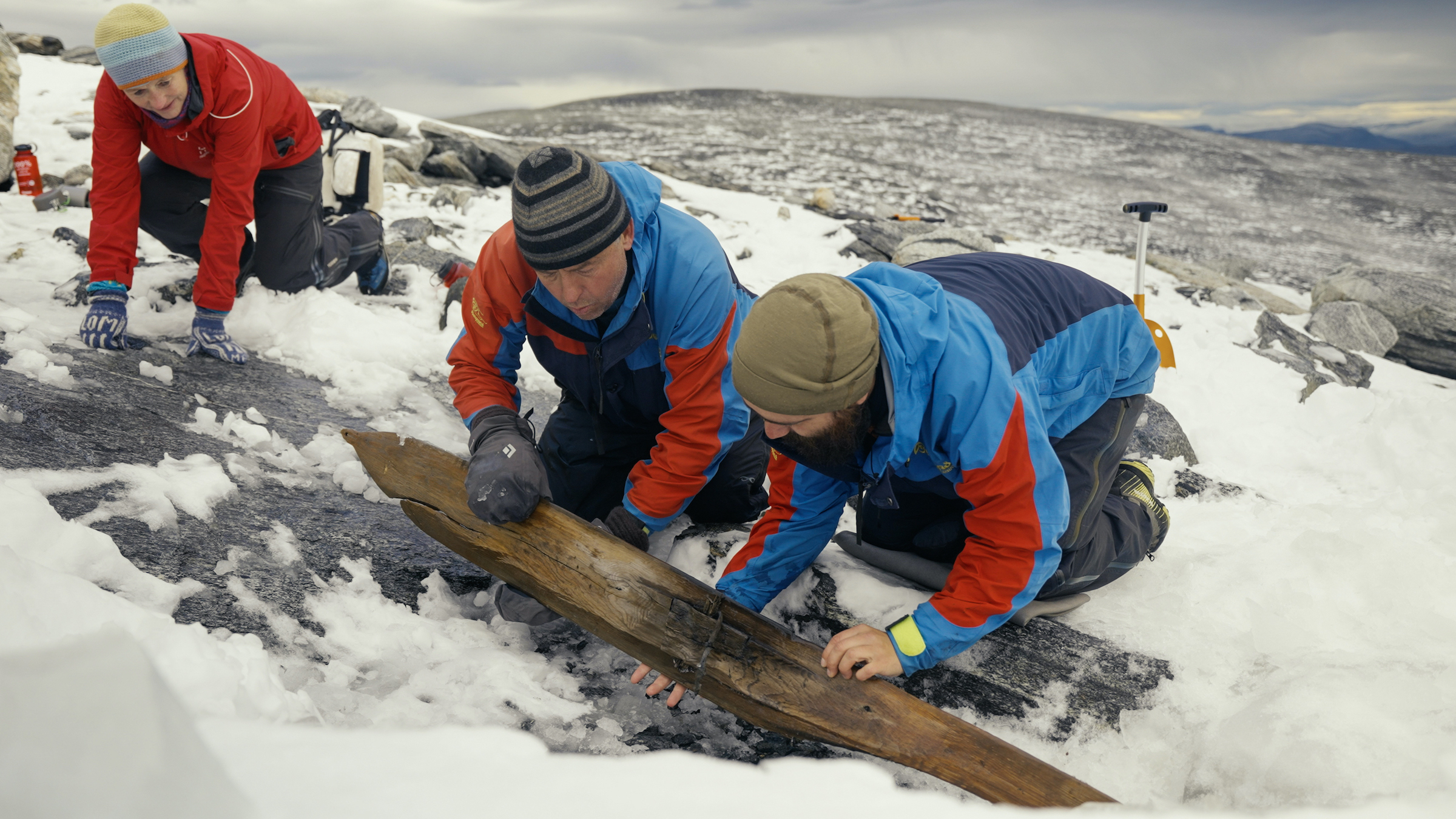
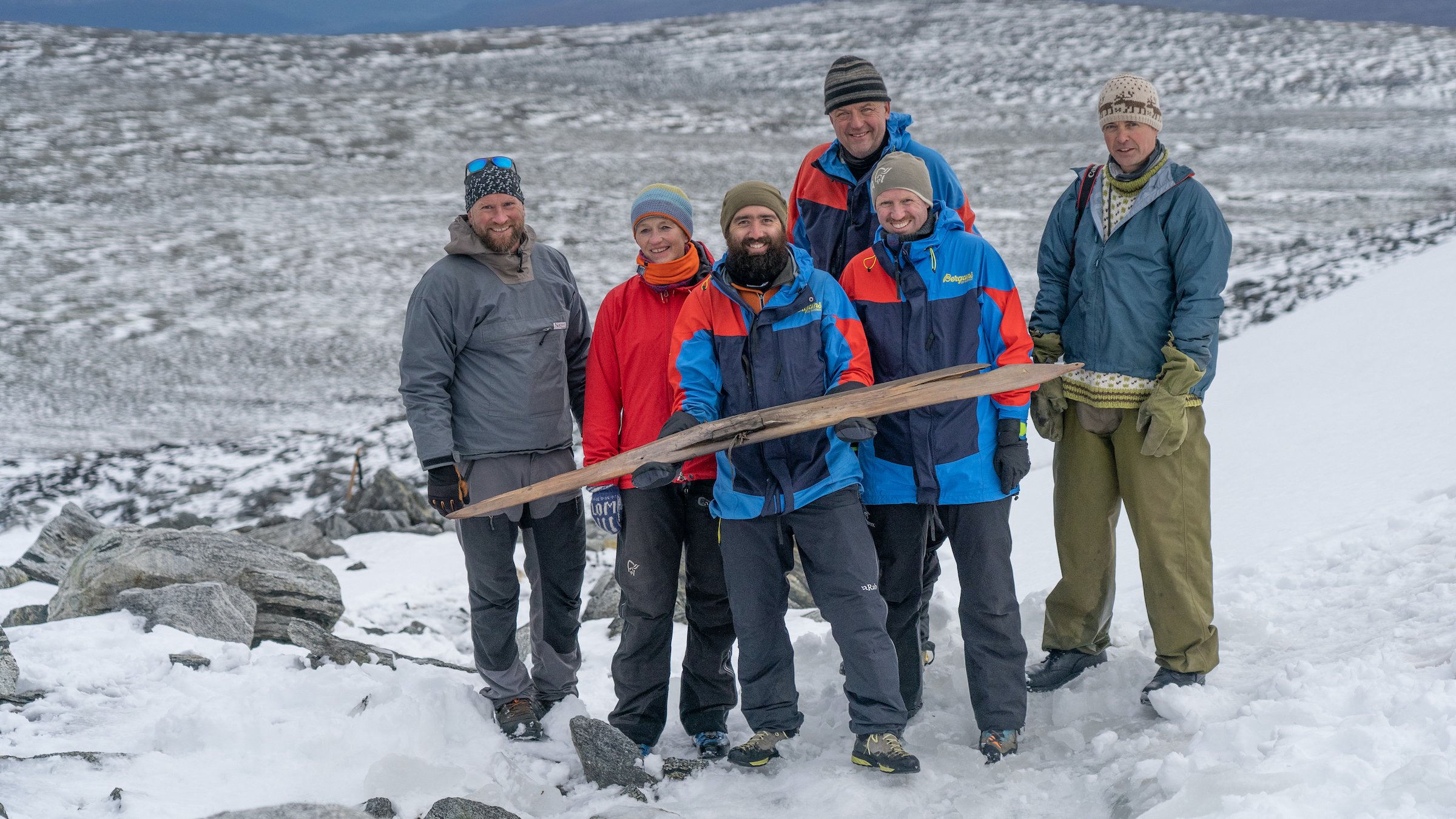
Skiing mystery
Both skis predate the Viking Age (A.D. 793 to 1066), and both are broad with a raised foothold and preserved binding. The skis are roughly the same size — the newfound one is 6.1 feet (1.87 m) long and 6.6 inches (17 cm) wide, slightly longer and wider than the first ski. However, the new ski was buried about 16 feet (5 m) deeper than the previously found one, so it was better preserved, and that may account for the size differences, according to the post.
The bindings of the newfound ski are made from three twisted birch pieces, a leather strap and a wooden plug that fits through a hole in the foothold area. In contrast, the previously found ski had only one preserved twisted birch binding and a leather strap. "There are subtle differences in the carvings at the front of the skis," Pilø added. "The back end of the new ski is pointed, while the back end of [the] 2014 ski is straight."
But archaeologists didn't expect the skis to be identical. "The skis are handmade, not mass-produced," Pilø wrote. "They have a long and individual history of wear and repair before an Iron Age skier used them together and they ended up in the ice 1,300 years ago."
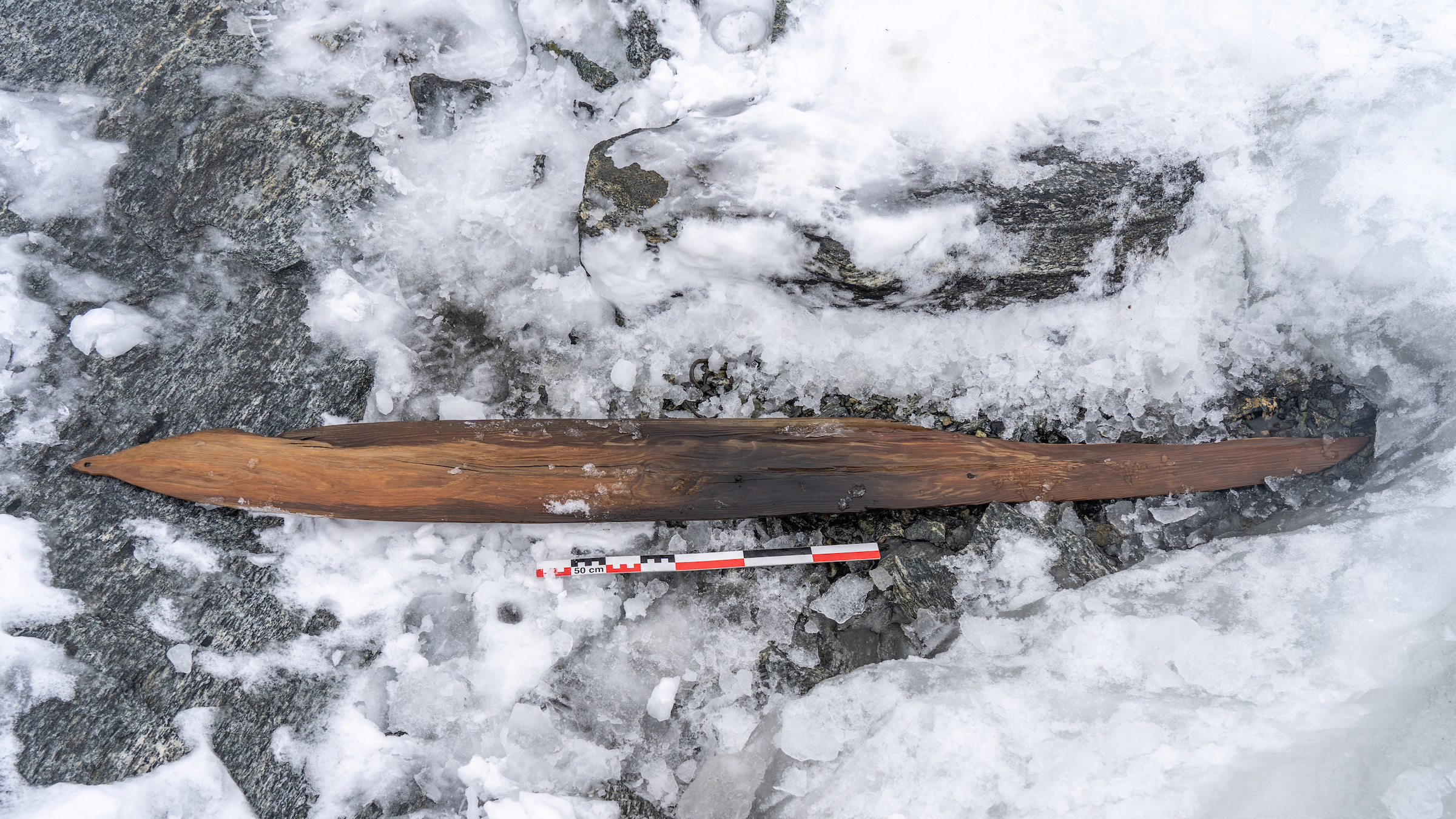
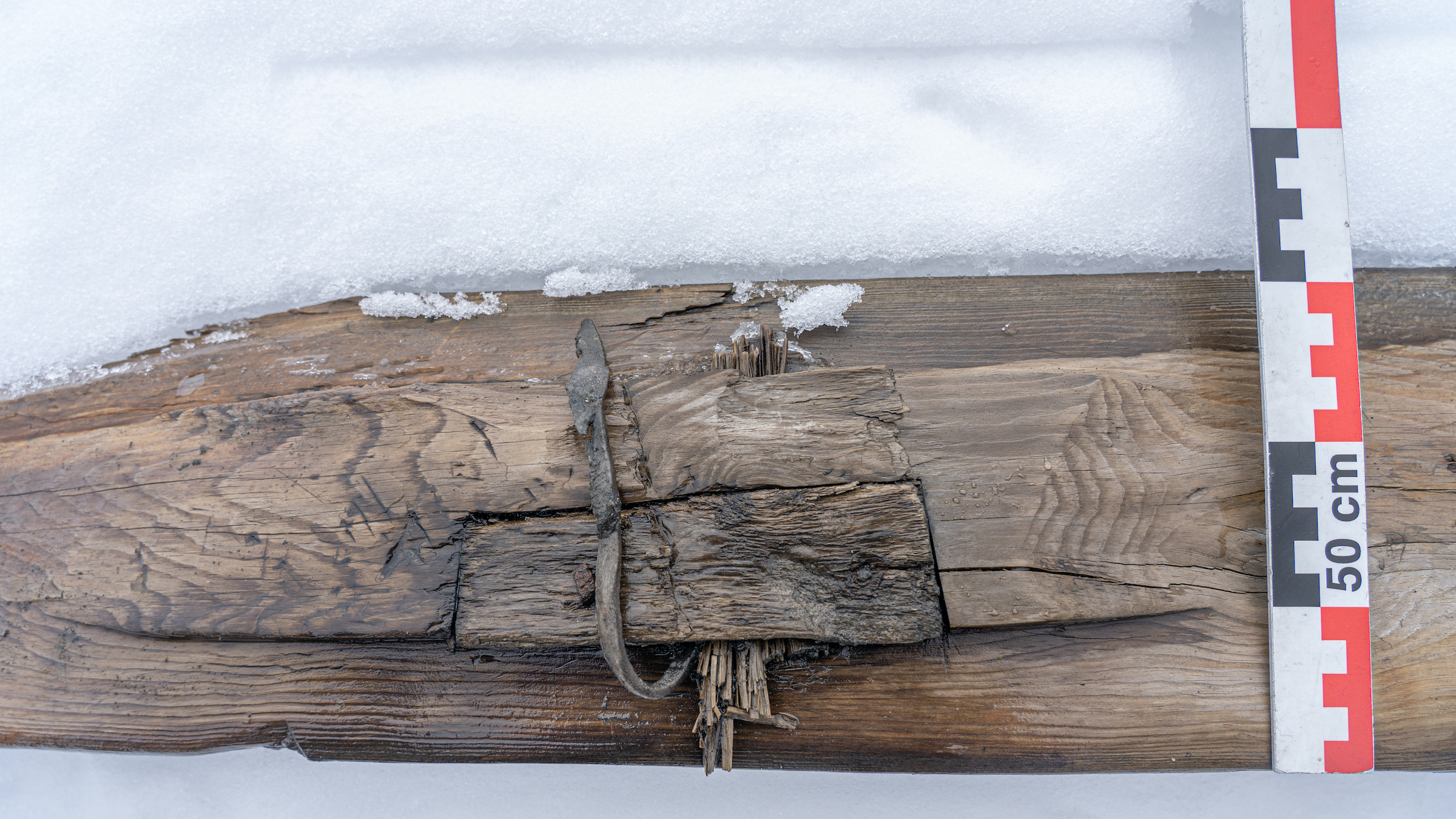
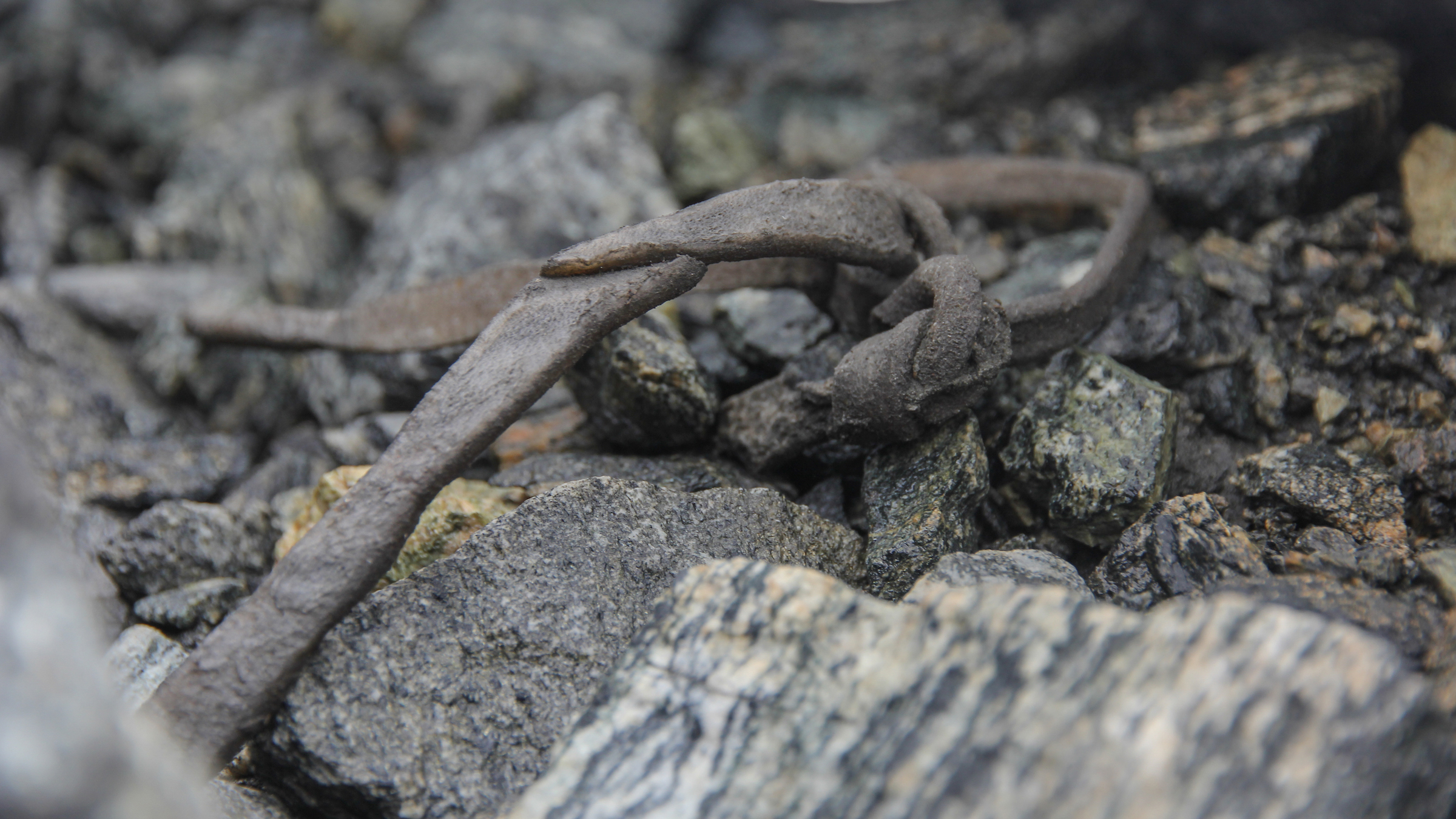
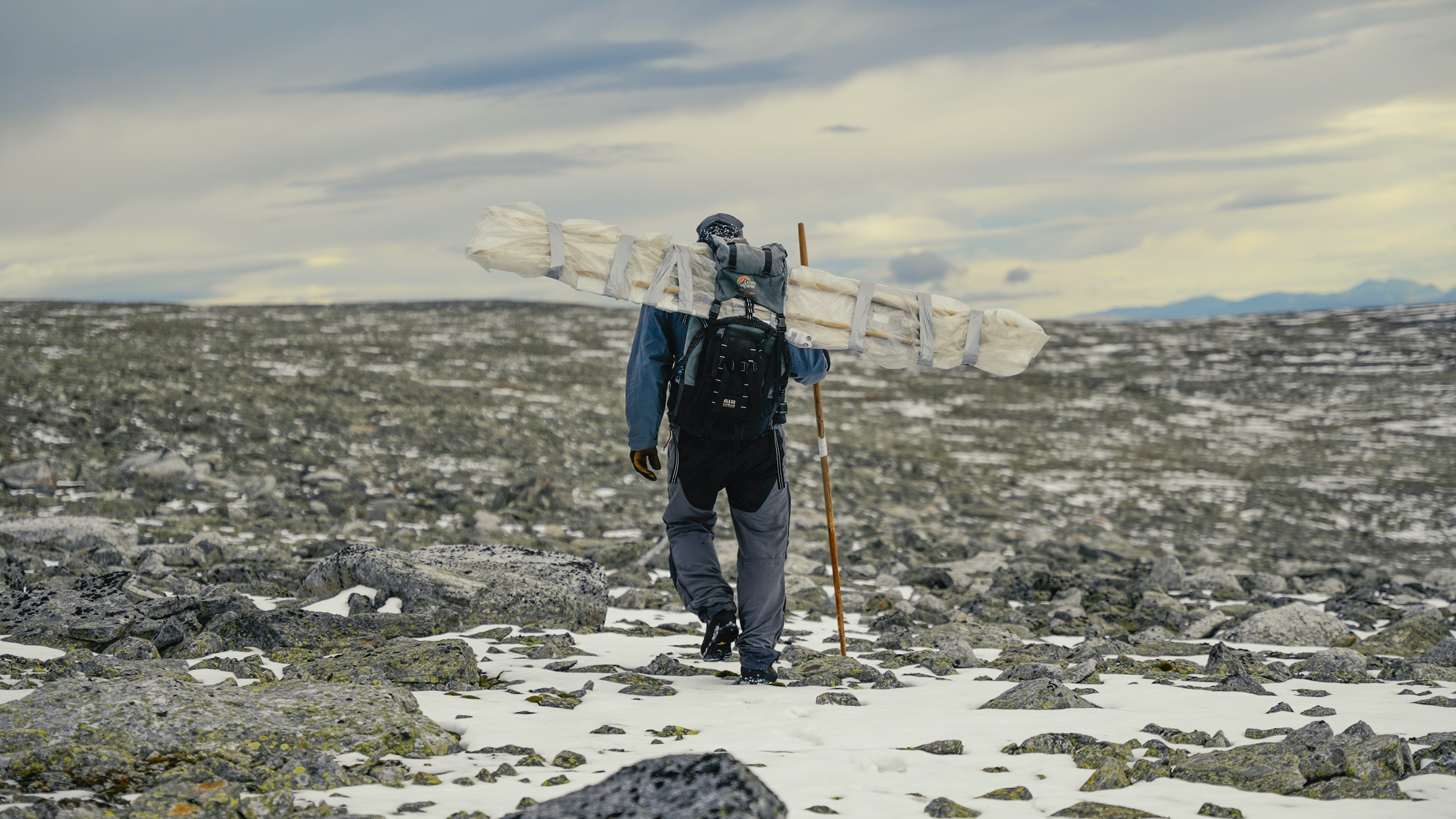
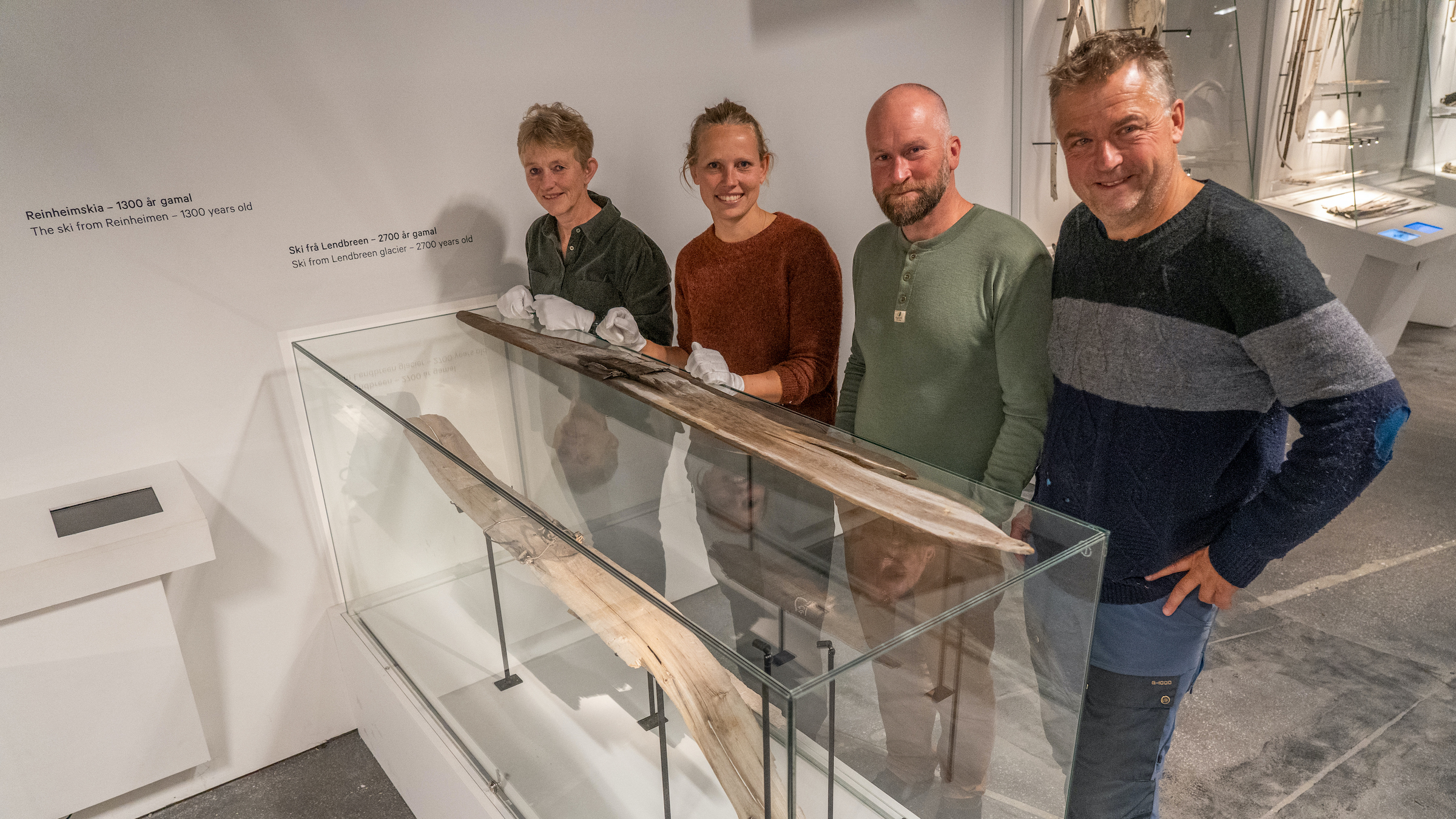
What's more, the foothold of the new ski shows signs of repair, indicating it was well used. The back of the ski is missing, but it's possible that this piece is still hiding under the ice, they said. On both skis, the upper part of the toe bindings, made of twisted birch, is missing.
Related: In photos: The vanishing glaciers of Europe's Alps
The new ski also answers an important question: Did the skis have fur on their undersides? The 2014 ski didn't have any nail holes along its sides that could have fastened a fur, the team said. Moreover, the newfound ski has a furrow on its underside, which would have been useless if fur was on it, so these skis were probably not fur-lined, the archaeologists noted.
The team is thrilled with the find — after all, this is the "best-preserved prehistoric pair of skis in the world," Pilø wrote — but the skis' discovery brings up more questions than answers; mainly, what happened to their owner?
Hunting artifacts and monuments on the mountain suggest that it was a prehistoric reindeer-hunting location. Moreover, several rock cairns may have been part of a mountain trail crossing, the team said. So, perhaps the owner was a hunter, traveler or both, Pilø wrote in the post. It's possible that the owner was hit by an avalanche, or suffered from another accident. Or maybe the owner left the skis behind after the toe bindings broke.
"Is the skier still inside the ice at Mount Digervarden? This is probably hoping for too much," Pilø wrote. "What we can say for sure is that we have not seen the last finds from the Digervarden ice patch. We will be back."
Originally published on Live Science.

Laura is the archaeology and Life's Little Mysteries editor at Live Science. She also reports on general science, including paleontology. Her work has appeared in The New York Times, Scholastic, Popular Science and Spectrum, a site on autism research. She has won multiple awards from the Society of Professional Journalists and the Washington Newspaper Publishers Association for her reporting at a weekly newspaper near Seattle. Laura holds a bachelor's degree in English literature and psychology from Washington University in St. Louis and a master's degree in science writing from NYU.









